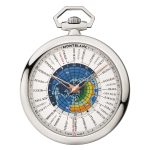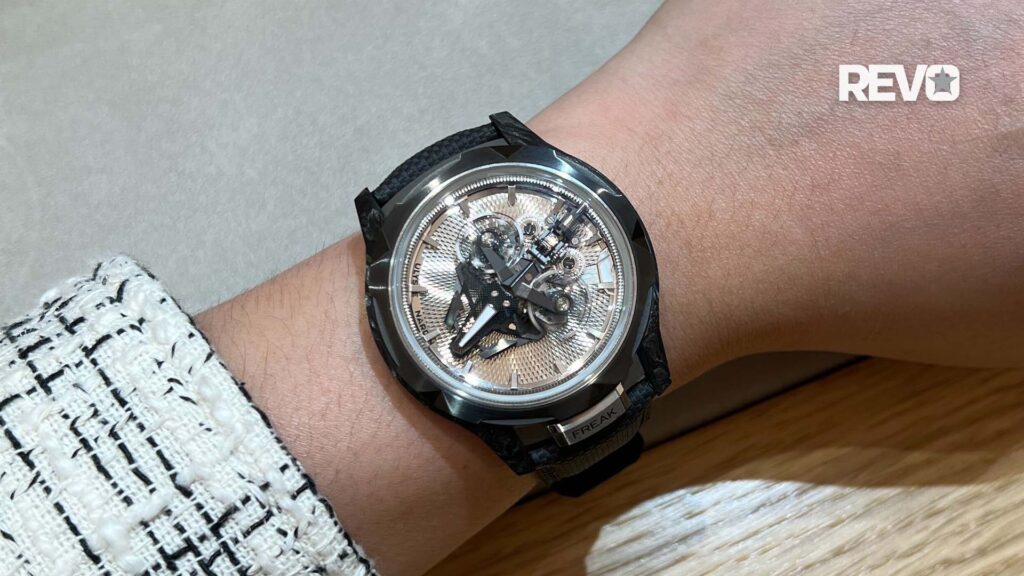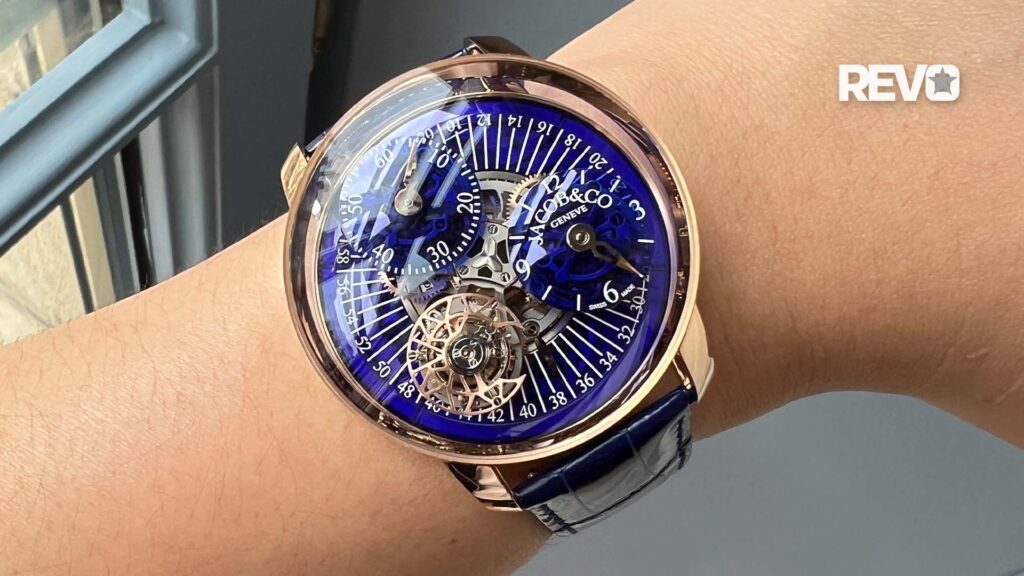Audemars Piguet
Heavens Above
Until well into the Middle Ages, and even later in Japan, it was accepted that the length of the 12 daylight and 12 nighttime hours would differ with the season. Indeed Japanese clocks were made to accommodate this. The more scientific Ancient Greeks detected the equinox, the dates in spring and autumn when day and night have equal length, and by the second century BC had decided that there should be 24 equal (equinoctial) hours in a day.
We don’t know who first divided the hour into 60 minutes but 60 has been a popular number since the time of the Sumerians – an early Bronze Age civilisation of southern Mesopotamia (modern-day southern Iraq). Like the Greeks, they were keen on geometry. A 60° angle can be created with a compass in two steps. Six of those 60° angles make a circle and one and a half make a very useful 90°. Moreover 60 can be divided easily and accurately by all the numbers one to six, plus 10, 12, 15, 20 and 30; the ancients could have lots of fun scribing lines with a pair of dividers. For simple mathematics the sexagesimal system has a lot more to offer than the decimal.
Moving Time
As the earth rotates, spinning towards the east, midday moves around the world. People living to the east of you will experience midday before you do; those to the west somewhat later. Bristol is 170km west of Greenwich at a longitude of 2.58° West. Therefore, when it’s noon in Greenwich local time, in Bristol it is just after 11.50am. This variation in local time led to disastrous train crashes in the early days of the American railways when trains going in opposite directions were sharing single tracks. The problem was solved by the International Meridian Conference held in Washington in 1884, which, to the chagrin of the French, established Greenwich as the Prime Meridian, and divided the world into broad Standard Time zones based on Greenwich Mean Time (GMT). The time zones around the dial of Montblanc’s 4810 Orbis Terrarum Pocket Watch 110 years Edition are just the latest illustration of this.
By this stage, it was widely regarded that the earth travelled around the sun, although it was still assumed that there were 24 hours from one midday to the next. When more accurate clocks became available it was soon realised that day length varied, in a regular fashion, throughout the year; 24 hours was simply the average, or mean solar day.
The variation is due, in part, to the fact that the earth’s orbit around the sun is not a circle but an ellipse. Moreover the axis of the earth’s rotation is not perpendicular to its orbit but is tilted around 23°. It is this tilt that gives us our seasons, but it also contributes to variations in the speed of the earth’s rotation with respect to the sun. The combination of the effects of the earth’s orbit and tilt are expressed in the equation of time. Breguet produced a watch showing the equation of time in 1827 and Panerai have revisited the trick not too long ago, although not as precisely as Audemars Piguet did previously with its Jules Audemar Equation of Time.
Space Time
As far as earthlings are concerned the earth rotates 365.24 times a year, giving us our leap year problem, but for any observer living outside the earth’s orbit, it makes an extra turn each year. This is because any object following a circular path rotates once from the point of view of anyone outside the circle. If you watch a child on a carousel you see them from every angle, they rotate even if they feel that they are charging forward on a wooden horse. The sidereal day, the time it takes the earth to rotate when viewed from a distant star, is 24 x 365/366 hours; about four minutes less than the mean solar day, and is constant (within 84 milliseconds due to the earth’s wobble), throughout the year. John Harrison used the sidereal day as a time standard when developing his longitude clocks. The method cost nothing and was very simple. He sat by a window on a clear night and noted when a star was aligned with the edge of a neighbour’s chimney and a point on the window. The precise alignment was repeated 23 hours, 56 minutes and 4 seconds, later.
Of course that fractional number of days in the year produces our messy calendar with a mix of long and short months, one of which varies on a four-year cycle. Watches with a simple date display have a mechanism that assumes every month has 31 days and so have to be reset at the end of each shorter month.
Perpetual calendar displays, where the date, day, month and year displays only need correcting at the end of occasional centuries (2100 is one), require remarkable feats of micro-engineering, and mechanical watches equipped in this way are very expensive. Watches with an annual calendar are somewhat cheaper; they can cope with 30- and 31-day months but need re-setting manually, once a year, on 1 March. Audemars Piguet’s Millenary Quadriennium, for example, needs resetting only on 1 March in leap years.
Over The Moon
The moon has no light of its own; we see it in the night sky because it reflects light from the sun. As the moon weaves around the earth we see varying amounts of its illuminated face. Some of the earliest clocks and watches attempted to mimic this cycle in moonphase displays (see Moonphase) and this complication has remained popular ever since in both men’s timepieces and those designed for women such as Jaeger-LeCoultre’s Rendez-Vous Night & Day.
The lunar month, or more precisely, the synodic month, the average time from one full moon to the next, is 29.53059 days. This is not a very convenient number, but 29½ days is pretty close. A disc with 58 teeth around the edge is moved on by one tooth each time the hour wheel turns one complete rotation, i.e. twice a day. The moon disc, therefore, rotates once in a lunar month. Usually a disc with twice as many teeth, and two moons, is used catering for two lunar cycles.
But, horror of horrors, this system under-estimates the lunar month by 14 minutes (actually 14 min 2.8 sec); in eight years the full moon would be indicated a day early. Watch companies from ochs und junior to Jaeger-LeCoultre with its Sphérotourbillon Moon have frequently striven to come up with a better system. Perhaps some customers have special plans for the night of the full moon and want to be precise?
But any such needs remain unfulfilled. Like the earth orbiting the sun, the moon follows an elliptical path around the earth and again the moon’s axis of rotation is tilted. The length of the lunar month varies by up to 13 hours every 6 months. Being ultra-precise about the length of the mean lunar month may be an interesting technical challenge for watchmakers, but it is of little value to genuine werewolves.
Shadowlands
With a cricket stump and an ability to travel it is easy to demonstrate the seasonal tilt of the earth. At either equinox drive the stump into the ground at the equator (Nairobi, Kenya, is pretty close and Quito in Peru is even closer). It will cast a shadow due west at dawn, the length will diminish to zero at noon and then stretch to the east as sunset approaches.
The same thing will happen if you visit anywhere on the Tropic of Cancer (latitude 23°N) on the Northern Hemisphere’s summer solstice, or Tropic of Capricorn (23°S) six months later. Go to the Arctic Circle on the summer solstice and the sun will spend 24 hours travelling around the horizon and the long shadow of your cricket stump will sweep around like the hour hand of a clock.
Equation Of Time
The length of the day, as indicated by the midday sun, varies throughout the year. It is only the mean solar day – which is mimicked by our clocks – that is 24 hours long. The difference between sundial time and standard time is shown by the equation of time (EoT). The EoT is the sum of two sine waves: one due to the earth’s elliptical orbit has a wave length of a year, the other, due to the tilt of the earth’s axis with respect to its orbital plane, has a wave length of six months and a slightly higher amplitude.
Considering the position of the earth in its slightly elliptical orbit during the course of the year, spring and autumn are on the “flatter” bits and summer and winter on the more “curved” regions (think of a rugby ball). A circle is defined by its centre (its focus) and radius, but an ellipse has two foci equidistant from its centre along the long axis. The sun is located at one of the foci so that the earth is closest to the sun when at one “end” of the ellipse and furthest away at the other. Strangely, it is closest in early January, the northern winter.
At the equinox, as the earth orbits the sun, its polar axis is tilted in the direction of travel, and the noon day sun is directly above the equator as the earth rotates. The axis of tilt stays in the same plane so that as the earth proceeds from the autumn equinox, the northern hemisphere begins to be tilted away from the sun, reaching a maximum at the winter solstice (when it’s summer Downunder). As the earth moves towards the spring equinox the northern hemisphere rocks back towards the sun until, at the summer solstice it has its maximum lean towards it. This “rocking action”, portrayed on a watch by Lang and Heyne, produces the variation in the 24-hour day shown in the line on the EoT graph.
Moonphases
The side of the moon that is towards the sun is always illuminated. As the moon moves between the earth and the sun, the illuminated side is facing away from us and we only see a disc dimly lit in the evening or early morning by the celestial glow, this is the new moon. As the moon continues its orbit the illuminated portion begins to be revealed, first as a left-facing (in the northern hemisphere) crescent, and the growing, or “waxing” moon eventually becomes a glowing disc, the full moon. In the latter half of the lunar month the lunar disc diminishes “waning” towards another new moon. When the moon is on either side of “full” it is sometimes called “gibbous”. As far as observers on earth are concerned the moon does not rotate; the same side is always facing us. It does, however, make one rotation a month, in a sidereal sense, due to its orbital motion.
If we ignore the earth in this picture and just look at the moon from some celestial platform, we see that it follows a wavy path as it orbits the sun. The moon and earth are locked in a gravitational embrace as the earth pirouettes once a day and the moon promenades around earth once a lunar month. Because the earth is much heavier than the moon, the earth-moon barycentre – their centre of rotation as a couple – lies about 1,000 miles beneath earth’s crust. The earth’s orbit, therefore, also has a monthly wiggle, but it is very slight.
Although watch moonphase displays can be designed to reproduce the mean lunar month very precisely, the length of the lunar cycle varies quite widely as the moon appears to go around the earth on a tilted elliptical axis. Note that the variation has an 8.5-year periodicity (indicated by the green arrows on the graph) due to the rotation of the moon’s apparent orbit; but that’s another story.
The moon and earth actually follow almost the same path as they orbit the sun. They are locked in a gravitational embrace as the earth pirouettes once a day and the moon promenades around earth once a month. The moon’s orbit around the sun has a slight wiggle, such that at the new moon it is on the sunny side of the earth and at the full moon it is on the dark side. The representation by Rudox is drawn to scale, showing how little the earth and moon solar orbits differ.










